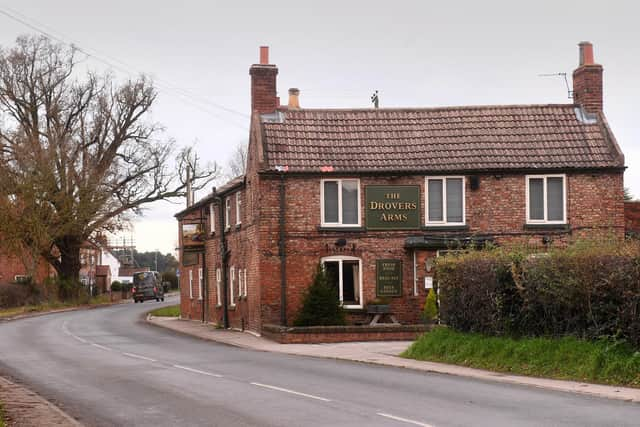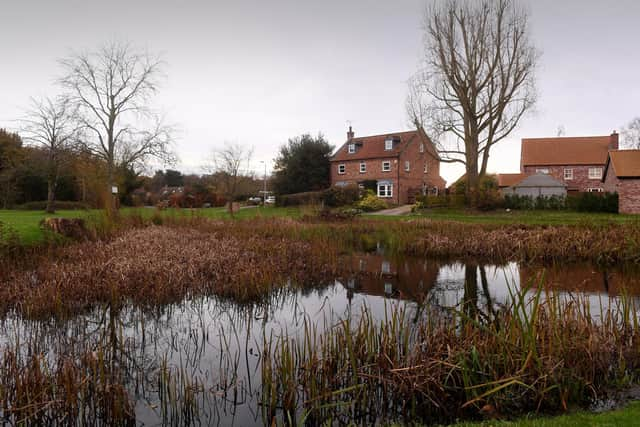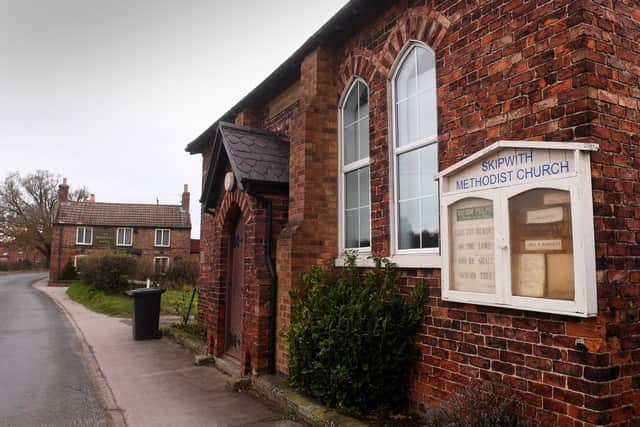Village of the Week: Skipwith has RAF history and is home to an ancient common
But the village of Skipwith, with a population of just 266 at the 2011 census, can boast all these things – and more.
On first glance, it appears much like many an East Yorkshire hamlet. The Main Street is neat, in a straight (ish) line and you can tell that years back it was populated with the odd farm and its buildings dotted about here and there.
Advertisement
Hide AdAdvertisement
Hide AdPrivets and rows of dainty yellow flowers provide colour and nature to the side of pavements.


Today, there are big bungalows that may be from the 1970s, or before, and some grand detached houses that have filled in the gaps between what are now former farms and converted buildings.
Newer so they are, they are in keeping with that look of narrow red brick and orange tiled roofs.
Thankfully, there are working farms in the middle of all this and are keeping a tradition going that has served Skipwith, near Selby and in the old East Riding for many hundreds of years.
Advertisement
Hide AdAdvertisement
Hide AdThe local pub is what you’d hope from a village or country boozer.


At The Drovers Arms, there is an abundance of hand pulled ales and local gins to wash down home-made pub meals that are based around local and seasonal ingredients.
What more do you need to brighten up a long, dark January?
The church is even older.
St Helen’s is Anglo Saxon but archaeological studies suggest that there could have been an earlier church on the site - maybe as early as the 7th or 8th century.


It is Grade I listed and was first written down in 1084 and a school and schoolmaster's house, built in 1714 have been from 1959, the village hall.
Advertisement
Hide AdAdvertisement
Hide AdBy 1086 and the records of The Domesday Book, a bishop by the name of Robert de Stuteville was down as having land in Skipwith and a manor.
Over the next 400 years that passed, that manor would pass to Hugh Wake by his marriage to Joan de Stutville in 1229. In 1325 it passed to Edmund of Woodstock, 1st Earl of Kent by his marriage to Margaret Wake, 3rd Baroness Wake of Liddell. It remained with his heirs until 1418, a decade after their line became extinct with the death of Edmund Holland, 4th Earl of Kent in 1408.
Skipwith Common, just outside the village itself, is a National Nature Reserve (NNR) and said to be one of only three areas within the Vale of York that represent what the area was like before intensive agriculture took over.
It had seen use in the Bronze Age and the Early Modern European period as well and Natural England have described the reserve as having "international importance" on account of "its wet and dry heathland".
Advertisement
Hide AdAdvertisement
Hide AdBut it wasn’t until 2010 that Skipwith Common was afforded the status of NNR, despite it now being more than 70 years since the first one was designated.
Skipwith didn’t fit the bill back then.
Roger Ratcliffe wrote for the Yorkshire Post about the story behind the nature and wildlife interest in Skipwith.
Ever since Victorian times naturalists have loved Skipwith Common, one of the country's biggest tracts of lowland heath. They went there to hunt for the rare large heath butterfly and also for the emperor moth, the only member of the silk-moth family to be found in Britain.
Arachnologists loved Skipwith too. Hundreds of different species of spider have been identified among the 700 acres of heather, grasses, mosses, scrub, bogs and trees. As for birds, Skipwith Common has long been famous with birdwatchers hoping to hear and see the haunting nightjar.
Advertisement
Hide AdAdvertisement
Hide AdAfter the Second World War, when the government was knocking out the details of the law which eventually set up National Parks, provision for National Nature Reserves (NNRs) was included. These were sites in England and Wales that required special protection for their wildlife, the jewels in the landscape's crown, and although the Common appeared on the provisional list it somehow never achieved NNR status.
Reasons as to why are not known for sure but by 2010 it was recognised that lowland heaths are the last remnants of the English countryside as it used to be. Their dominant feature is large open areas of heather, normally associated with uplands. They are the UK's most threatened habitat, with around 90 per cent of them being lost to agriculture in the last 100 years.
Prior to Victorian interest, Skipwith Common covered more than 860 acres and is now down to 580 acres.
Some of this may be due to the RAF taking over parts of the Common in the middle of the Second World War.
Advertisement
Hide AdAdvertisement
Hide AdRAF Riccall was opened in September 1942. It hosted several training and maintenance units and even after flights stopped in 1945, RAF Riccall was used for storage purposes for another 13 years.
It continued to be used for farming and work was being undertaken to have Skipwith recognised at national level for its importance to the environment, but in what seems quite the contradiction, coal was being mined underground from 1997 as part of the Selby Coalfield programme.
Apparently there are likely to be more than double the number of insects on Skipwith Common alone than there are humans on the planet (around 20 billion) and Skipwith Common was one of the last places in Britain to have the Northern Mire Moss paludella squarrosa as part of its vegetation (1916), though the plant is believed to be extinct in Britain now.
